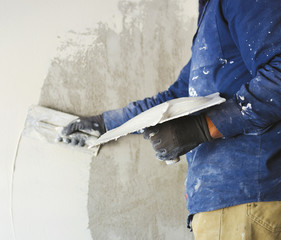Norton Home Remodeling is a serious commitment, both in time and money. To ensure that you achieve the desired outcome of your project, it is essential to have a clear idea of what your goals are and how you want to proceed with your project.

It is also vital to understand the difference between renovation and remodeling.
One of the main benefits of home remodeling is that it allows homeowners to customize their living spaces according to their personal preferences and lifestyle. This can include everything from rearranging existing rooms to adding new ones. By tailoring renovations to specific needs and desires, homeowners can create a more comfortable and inviting space that they will love spending time in.
Home remodels can also increase a property’s overall value. This is because when done correctly, they can address issues that might be an obstacle to future buyers. For example, older homes can have a number of problems including outdated electrical or HVAC systems that might need to be replaced. Upgrading these areas can make the home more energy-efficient and safe. Homebuyers will be drawn to these features and may be willing to pay a premium for the home.
Another benefit of home remodeling is that it can improve living comfort. This can be achieved by reconfiguring spaces to better suit occupants’ lifestyles, such as creating an open-plan living area or adding an en suite bathroom for convenience. It can also be achieved by upgrading appliances and facilities to make them more functional, such as installing an energy-efficient furnace or replacing old water heaters.
Additionally, home remodels can help to prevent problems by addressing any issues as they arise. For example, if a home is not properly insulated, it can cause costly energy bills. Remodeling can reduce heating and cooling costs by ensuring that the house is well-insulated and has proper ventilation. In addition, if a home has plumbing leaks or electrical problems, they can be addressed during the remodel process to avoid future damage and potential safety hazards.
Finally, home remodeling can also enhance a living space by improving the aesthetics of the house. By choosing colours, materials, and design elements that reflect the homeowner’s unique style, they can create a more welcoming and inviting space that will make them feel at home. This can be particularly important for people who spend a lot of time at work, as it can help to reduce stress and encourage relaxation.
Increase Your Home’s Value
Home remodeling is a great way to increase your home’s value. This can be beneficial when you decide to sell your home in the future, since it can help you recoup some of the costs of the remodel. However, it is important to keep in mind that not all home remodeling projects will provide a high return on investment.
There are many different ways to increase your home’s value, including adding a pool or spa, updating kitchen appliances and cabinets, or installing new flooring. In addition, you can also increase your home’s value by making energy-efficient upgrades. These upgrades will reduce your home’s carbon footprint and save you money on energy bills.
Choosing the right project for your home can be difficult, especially if you’re not sure what features will attract buyers. To help you make the best decision, you can consult with a real estate agent or look at data from online resources. These websites will provide you with information on the average cost and return on investment for various projects.
It is also important to understand the difference between remodeling and renovating. Remodeling involves structural changes and altering a space’s primary function, while renovation focuses on cosmetic updates without changing a room’s structure or purpose. Generally, remodeling projects tend to be more expensive than renovations.
Homeowners who choose to remodel their homes can also improve living comfort by modifying the layout of the home to better suit their needs. For example, homeowners with physical limitations can benefit from remodeling their kitchen by moving countertops and appliances to a more accessible location. This can help eliminate the need to climb over obstacles and improve their overall mobility. In addition, homeowners can install softer floors like bamboo or carpeted floors to help reduce knee, ankle, and hip pain caused by standing and walking on hard surfaces.
It is important to consider the long-term impact of your home remodel on your health and well-being. Having a healthy and comfortable home can reduce stress levels and improve quality of life. It is recommended that you work with a professional company who can understand the upheaval that a remodel can cause to your daily routine and will help you through this process as seamlessly as possible.
Improve Your Health
Home remodeling isn’t just about improving your living space; it can also help improve your health. The hidden benefits of a remodel include energy savings, reduced environmental impact, and greater longevity for your home’s structural components. These improvements can provide you with a more enjoyable, meaningful, and comfortable lifestyle that supports healthy living.
Modernizing your home with energy-efficient upgrades and eco-friendly materials helps reduce the amount of harmful chemicals that you are exposed to on a daily basis. This can decrease your risk of respiratory issues and other health problems associated with chemicals in your home. Upgrading to greener building materials like bamboo, cork, and wood also helps protect the environment.
A remodel can help you stay physically fit by removing hazards in your home’s environment that could be potential health risks for family members and guests. For example, a kitchen renovation can remove compound flooring contamination from spillages and other accidents, replace rickety cabinets that pose a tripping hazard for young children, and eliminate old electrical wiring that may be a fire risk.
By upgrading your bathroom to include safety features like grab bars and wider doorways, you can make your home more accessible for older family members or people with mobility challenges. This makes your home a more accommodating and welcoming place for everyone in your family while increasing its appeal to future buyers with accessibility needs.
High-quality sleep is vital to maintaining good health and can be improved by making your bedroom a relaxing, dark, and quiet space for sleeping. Remodeling your home’s bedrooms with blackout curtains and a new bed can help ensure that you get the quality rest that you need to maintain your physical and mental well-being.
Many homeowners confuse the terms “renovation” and “remodeling,” but these processes have different goals. Remodeling involves altering a room’s structure and function, while renovating is cosmetically updating an existing space without changing its primary purpose. Homeowners often consider renovating their home’s interior because of the aesthetic changes that can be made, but a renovation may not achieve the desired results.
Increase Your Social Life
Home remodeling is an investment in your home that can have a direct impact on your personal life. The benefits of a home renovation can boost your mood, increase productivity, decrease stress, and even improve your social life. The best part about a home remodel is that you can customize your living space to fit your personality and style. If you’re tired of being embarrassed by your home’s outdated decor, a simple remodeling project can make all the difference.
One of the most overlooked benefits of a home remodel is that it can help to improve the quality of your relationship with family members. During the course of a renovation, there is usually increased communication amongst family members as everyone works together to achieve a common goal. Once the project is completed, family members often spend more time together in the new and improved home, which can also lead to strengthened relationships.
A common reason people don’t entertain family and friends is that they don’t have enough space to accommodate guests. A simple remodeling project, like adding a guest bathroom, can dramatically increase your ability to host friends and family in the comfort of your own home.
Another benefit of a home remodeling project is that it can help to keep your house more organized and free of clutter. Many homeowners are able to “pull a Marie Kondo” during a renovation and eliminate unnecessary clutter from their homes, which can be very satisfying. Having more storage options can also help you to keep your home tidy and clean.
While the majority of remodeling projects don’t result in a significant return on investment when it comes to resale value, they can significantly enhance living comfort and quality of life for building occupants. A well-planned and executed remodeling project can help to improve living comfort, increase energy efficiency, and improve security. In addition to these monetary benefits, remodeling can also boost a homeowner’s sense of self-worth by transforming an old and worn out living space into something beautiful and functional.








